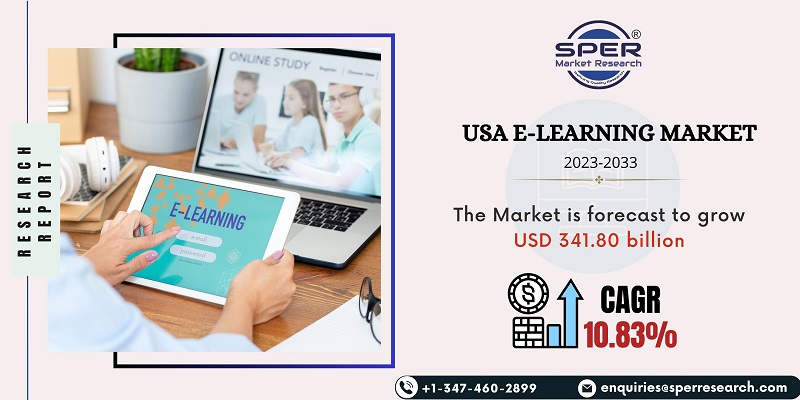E-learning is a modern learning concept that uses digital tools and technologies to advance knowledge. It promotes a fruitful exchange of knowledge by providing participants with a dynamic setting for interaction. E-learning is also utilised as a substitute for traditional classroom instruction in order to keep up with the constantly evolving requirements for providing high-quality education. Additionally, businesses are setting up specialised online training programmes for workers, which is spurring an increase in the use of e-learning solutions in Saudi Arabia.
According to SPER market research, ‘Saudi Arabia E-Learning Market Size– By Product, By Distribution Channel- Regional Outlook, Competitive Strategies and Segment Forecast to 2033’ state that the Saudi Arabia E-Learning Market is predicted to reach USD 8.44 billion by 2032 with a CAGR of 16.32%.
The growing government investment in education to close the education gap is the main factor driving the Saudi Arabia e-learning market. To encourage high-quality education, the Saudi Arabian government is supporting the use of online learning programmes. In addition to this, other institutions are launching projects that are having a favourable effect on the market. For instance, the Microsoft Corporation has teamed up with companies like C-Telecoms, COMM-IT, Sahara Net, and Al-Mayssan Technical Services to offer free half-day training sessions in its “Teams” technology to academic institutions in Saudi Arabia. The users of this workshop will learn how to use technology effectively to facilitate seamless remote learning. In addition, the widespread use of smartphones and the internet has raised demand for e-learning platforms because of their capacity to disseminate knowledge at any time and from any location.
However, despite a growth in internet usage in Saudi Arabia, a sizable segment of the population still has poor digital literacy. The widespread acceptance of e-learning is challenged by the lack of digital knowledge and skills, especially among older people and marginalised groups. Although internet connectivity has improved, some regions of Saudi Arabia continue to have infrastructure issues that limit the usability and dependability of e-learning systems. It is essential for the e-learning market to have sustained growth that these infrastructure gaps are filled.
Request For Free Sample Report @ https://www.sperresearch.com/report-store/saudi-arabia-e-Learning-market.aspx?sample=1
Additionally, the COVID-19 pandemic has notably affected the e-learning sector in Saudi Arabia. It has triggered a surge in demand for e-learning services due to the closure of educational institutions. Consequently, both students and educators have increasingly embraced e-learning platforms and online courses. The pandemic has expedited the integration of digital technologies in education, necessitating investments in e-learning software and infrastructure. Moreover, there is a growing trend toward blended learning, combining traditional and online teaching. However, challenges persist in terms of access and infrastructure, particularly concerning reliable internet access and device availability, particularly in rural areas.
Geographically, the e-learning industry in Saudi Arabia is expanding in all parts of the country. Major cities like Riyadh, Jeddah, and Dammam have led the way in e-learning adoption thanks to their developed infrastructure, accessibility to educational facilities, and sizable student populations. To ensure equal access to education, attempts are being undertaken to expand e-learning initiatives to remote and underprivileged communities. Additionally, some of the market key players are Abbott, Ameda, Artsana S.P.A, Edgewell Personal Care, Clarins Group, Nine Naturals LLC, Noodle & Boo, Nuby, Others.
For More Information, refer to below link: –
KSA Digital Learning Market Forecast
Related Reports:
Follow Us –
LinkedIn | Instagram | Facebook | Twitter
Contact Us:
Sara Lopes, Business Consultant — USA
SPER Market Research
+1–347–460–2899









